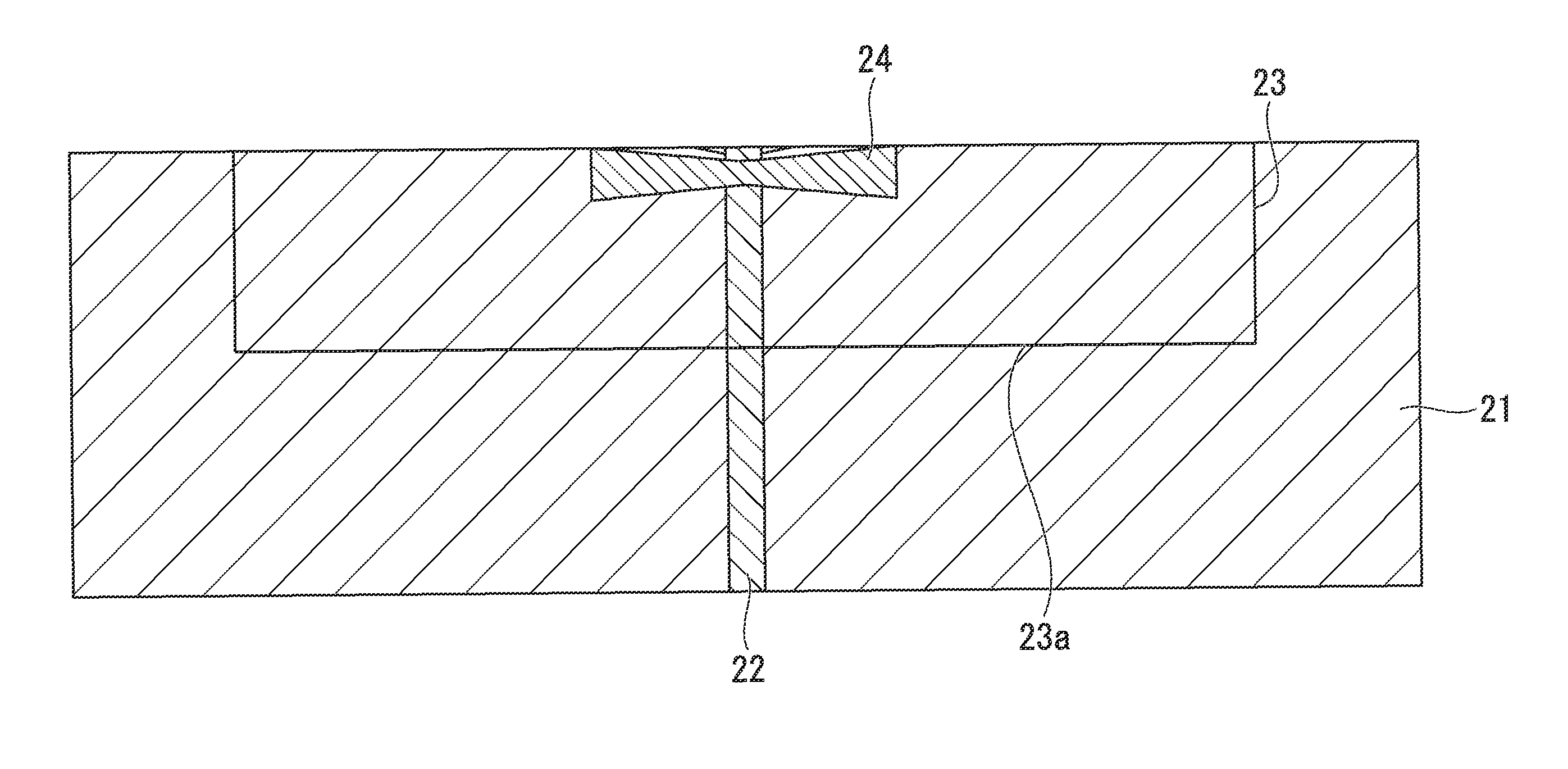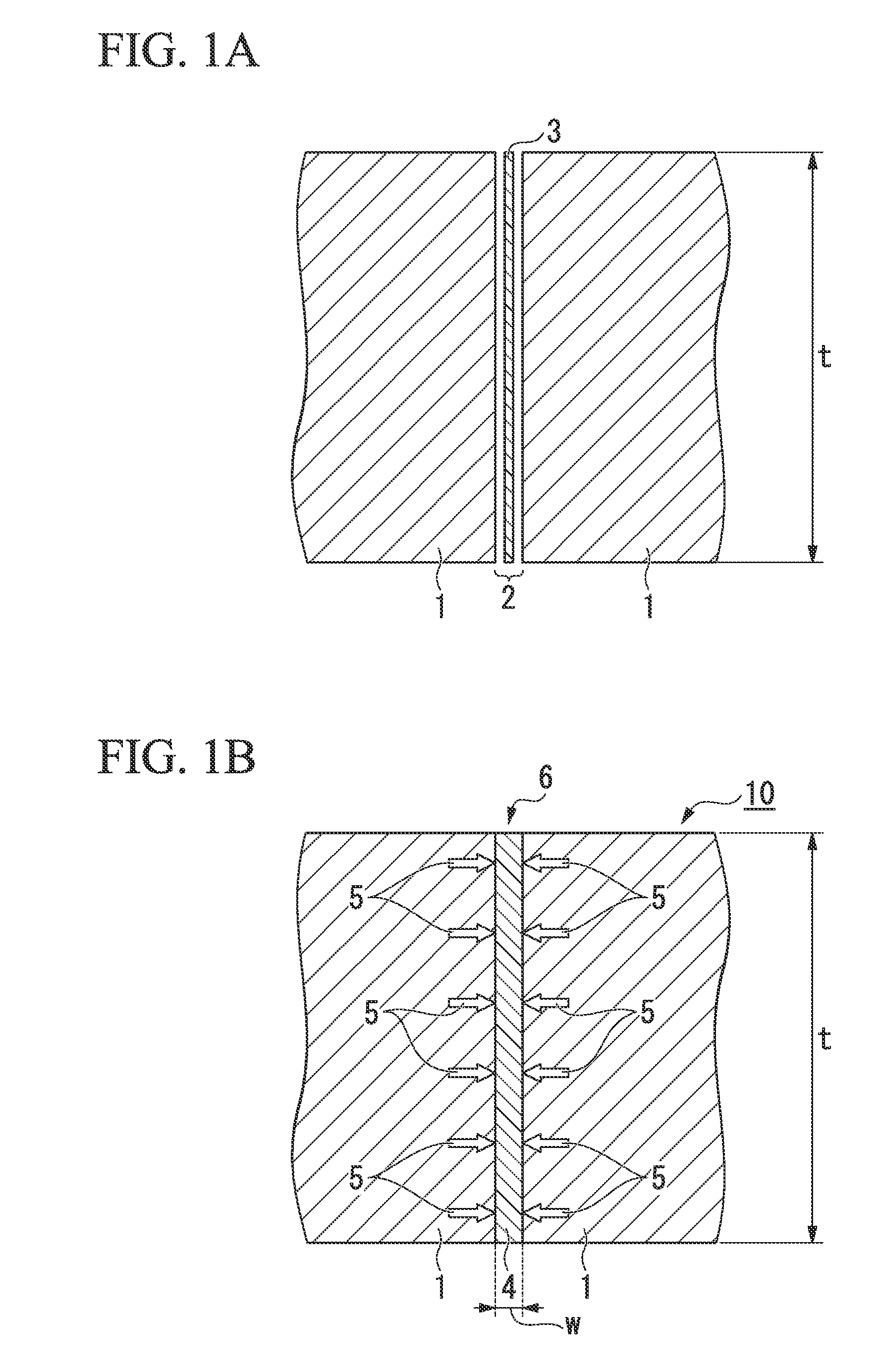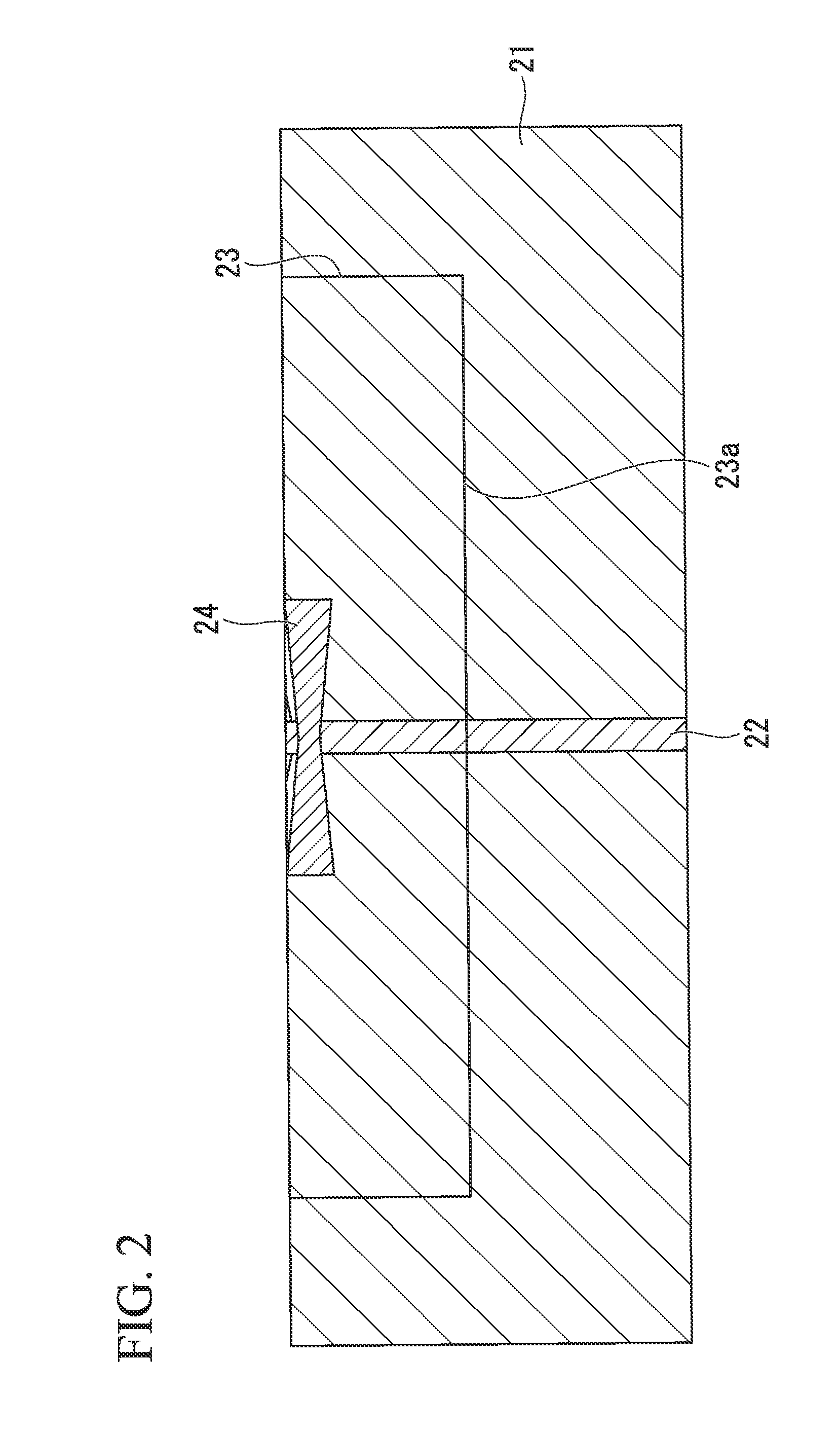Butt welding joint using high-energy density beam
a beam and high-energy density technology, applied in the field of welding joints, can solve the problems of limited size of steel plates that can be welded in the related art, and achieve the effects of reducing the starting temperature of welding metal transformation, high fracture toughness value, and improving fatigue properties
- Summary
- Abstract
- Description
- Claims
- Application Information
AI Technical Summary
Benefits of technology
Problems solved by technology
Method used
Image
Examples
examples
[0086]The insert metal having components shown in Table 2 was inserted using the steel materials 1 to 20 having a chemical composition shown in Table 1, and was subjected to butt welding using the electron beam welding and the laser beam welding under the welding conditions shown in Table 3 to thereby form a welding joint.
[0087]As described above, a transformation starting temperature Ms (° C.) shown in Table was obtained using a formula of Ms=371−353C−22Si−24.3Mn−7.7Cu−17.3Ni−17.7Cr−25.8Mo.
[0088]In the welding joint shown in FIG. 2, it was devised that a joint fatigue test piece 23 was sampled, and a rear surface 23a of the joint fatigue test piece 23 was subjected to mechanical grinding, so that a fatigue crack was generated from a surface side of the test piece. A fatigue test was conducted at an axial force, a stress ratio of 0.1, and a repetition rate of 5 Hz, thereby calculating a fatigue strength at 2×106 cycles. In addition, in the welding joint shown in FIG. 2, an ultrasoni...
PUM
| Property | Measurement | Unit |
|---|---|---|
| temperature | aaaaa | aaaaa |
| thickness | aaaaa | aaaaa |
| height | aaaaa | aaaaa |
Abstract
Description
Claims
Application Information
 Login to View More
Login to View More - R&D
- Intellectual Property
- Life Sciences
- Materials
- Tech Scout
- Unparalleled Data Quality
- Higher Quality Content
- 60% Fewer Hallucinations
Browse by: Latest US Patents, China's latest patents, Technical Efficacy Thesaurus, Application Domain, Technology Topic, Popular Technical Reports.
© 2025 PatSnap. All rights reserved.Legal|Privacy policy|Modern Slavery Act Transparency Statement|Sitemap|About US| Contact US: help@patsnap.com



